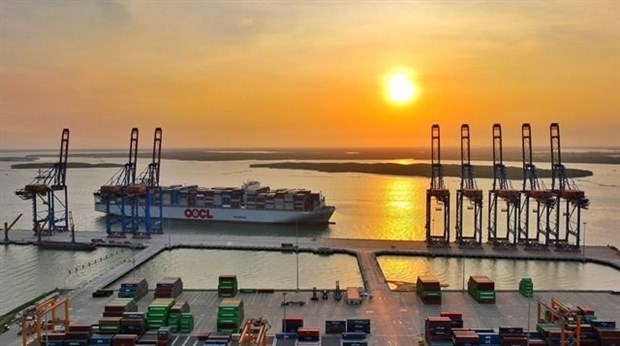Vietnam, Cambodia have fastest port turnaround times in ASEAN: WB
Container shipping in Vietnam and Cambodia had the fastest port turnaround times in ASEAN in June 2022 with both countries scoring an average of 0.9 days, according to a World Bank (WB) report.

Global logistics data released recently in Washington were among new key performance indicators that complement the Logistics Performance Index (LPI) for 139 economies, the WB said.
Among other ASEAN members, Thailand had the second-fastest turnaround time of 1.0 day followed by Malaysia and Singapore (both 1.2 days), the Philippines (1.3 days), Indonesia (1.8 days) and Myanmar (2.0 days).
In a statement, the bank said digitalisation was allowing emerging economies to shorten port delays by as much as 70% compared to those in developed countries.
“While most time is spent in shipping, the biggest delays occur at seaports, airports, and multimodal facilities,” said Christina Wiederer, the bank’s senior economist who co-authored the report.
“Policies targeting these facilities can help improve reliability,” she said.
At 4.3 points, Singapore was top ranked, both within ASEAN and worldwide. It was followed by Malaysia (3.6 points), Thailand (3.5 points), the Philippines and Vietnam (both 3.3 points) and Indonesia (3.0 points). An ranking for Myanmar was not available.
Despite challenges such as COVID-19, the bank said logistics services were “broadly resilient” for best and worst performers worldwide.
“Even with the COVID-19 pandemic-induced disruptions to shipping and the global supply chain crisis, the average overall score in the 2023 LPI was broadly the same as in the last survey in 2018,” it said.
The LPI has six indicators: efficiency of customs and border management clearance, quality of trade and transport infrastructure, ease of arranging competitively priced shipments, competence and quality of logistics services, ability to track and trace consignments, and frequency of on-time deliveries.
Recently, major shipping lines in the world have invested in the construction and operation of seaports in Vietnam.
For example, DP World Group of the UAE invested in and operates Saigon Premier Container Terminal (SPCT) – HCM City; SSA Marine Corporation of the US with Cai Lan International Container Terminal (CICT) in Quang Ninh Province and SP-SSA International Terminal (SSIT) in Ba Ria-Vung Tau province; PSA Group of Singapore with SP-PSA Terminal in Ba Ria-Vung Tau; APMT Group of Denmark with Cai Mep International Terminal (CMIT) and Hutchison Port Holding Group of Hong Kong with SITV Terminal in Ba Ria-Vung Tau as well.
Better seaport services and rising shipping demands have attracted large shipping lines to open routes from Vietnam to other countries in the world. Lach Huyen wharf is capable of accommodating vessels of up to 132,000 DWT and Cai Mep - Thi Vai wharf, 214,000 DWT or over 18,000 TEUs. Every week, nearly 40 vessels depart from Cai Mep - Thi Vai Terminal, including 18 to Europe and America, and 10 to Asia, gradually making Vietnam an important link in the global maritime chain.
Direct service routes connecting major markets globally will create opportunities for Vietnamese exports. The turnaround time of service routes from Vietnam to the West Coast of the US used to take from 35 to 49 days. With the AA3 direct service route operated by Wan Hai shipping company, the transit time is 21 days only. The USCW service of ZIM shipping line has the fastest route connecting Cai Mep - Thi Vai port with the West Coast of the US with transit time down to 15 days.
The Ministry of Transport approved a plan to select contractors for site survey consultancy, drawings preparation and bomb disposal to upgrade the Cai Mep - Thi Vai port cluster from Buoy No.0 to the Cai Mep Container Terminal.
Work on the project started in early February 2023 and will be completed in 2025 with total investment capital of VND1.4 trillion from the State budget.
According to the Ministry of Transport, the navigational channel from buoy No.0 to the upstream of the Cai Mep International Terminal (CMIT) is designed for ships of 160,000 deadweight tonnage (DWT) with a full load and 120,000 DWT vessels for two-way operation.
